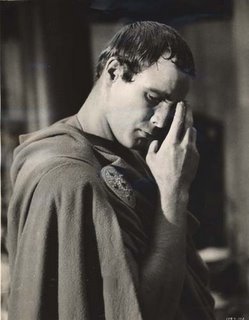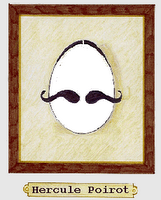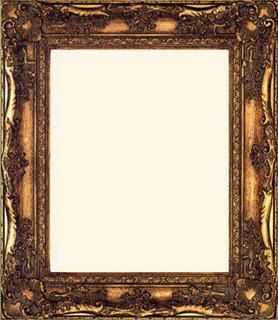(Or: Shakespeare, Everyone’s Contemporary)
I am not interested in repeating the old ‘A’ Level arguments; the grade 12/13 and equivalent
essay: Is Shakespeare relevant?
The answer is, "Yes."
If you don't like it: Go away and grow up!
My question is this:
Why are Shakespeare's plays so contemporary?
How can we find ‘Post-Holocaust Landscapes’ in
Lear? How does
Richard the Third become subversive in the Muslim World (and in communist Romania before the fall of the Soviet Block)?
He’s
Shaikh Al-Zubair, the Bard of Basra (aka Shakespeare).
What is in
Romeo and Juliet to make modern film audiences go and watch - and black and white adaptations of
Macbeth into Japanese film classics?
Young starlets wanting to make a name for themselves, and tired old thespians, willingly tackle the language of 400 hundred years ago, and
Egyptian academics fight over the correct way to translate it - into modern or classical Arabic.
Why do the
Turks - and
Kurds - value the work of this very dead, very white (when he washed), very Christian, English Man?
I think a very large part of it is not what he wrote, but what he didn’t write.
It’s the empty spaces left to be filled by the actors, designers, directors (and the audience’s) imaginations.
People forget that Shakespeare was a man of ‘The Theatre’ (and afterwards,
‘The Globe’, and ‘The Blackfriars’). Many don’t like to be reminded that the building of ‘The Theatre’ was not only cutting edge art, but also great commerce.
No one knew how to write plays for this building – but they knew they wanted to write plays that made a lot of money.
As a jobbing playwright Shakespeare was the craftsman who produced words that were the starting point of these money-making productions. He had no concept of their being works of literature to be preserved – like Bach and Mozart in music, he was expecting his works to have a very limited period of use – disappearing, sometimes before his own life was ended.
The script was incomplete – in the very real sense of Shakespeare bringing into the rehearsal rough manuscripts, which he would work on and adapt during the rehearsals as he directed.
A contemporary reference to Elizabethan Theatre mentions the fact that the playwright directing the plays was one of the more distinctive features – and one of the main reasons the standards were so good in England when compared to continental Europe.
The words were also written in the knowledge that they had to be adaptable: Different spaces and different audiences required different versions – think what happens in
Hamlet to ‘The Murder of Gonzago’ – how the play is added to, and changed, at very short notice.
The complete
Hamlet, in the printed text academics are now so addicted to, was never performed in Shakespeare’s theatres: It is far too long – Shakespeare would have sliced it to pieces, ruthlessly cutting much of what is now thought to be essential.
There is no way, for starters, the groundlings would have ‘stood’ for the long hours needed to go through the whole text (a six hour
Hamlet!). It would have got dark anyway and no one would have seen the stage. And why waste that much energy on performing when the punters would pay for less?
Unfortunately, when it was printed, it looks like someone used the unedited rough version – not the final stage version. I don’t think it is a coincidence that the drastic cuts needed to produce a filmable script, make
Hamlet much more bearable and popular (with audiences) as a film than as a stage production:
Hamlet in the cinema is entertainment, at ‘The Royal Exchange Theatre’ in Manchester, a religious observance.
A lot of the stage action couldn’t be fixed in the manuscript – it would change according to which actors (and how many) were available. How many people were available to represent an army? How much space was there? Was there a pair of good swordsmen? What was popular with the audience at the time – ‘shall we slip in a favourite visual joke this time?’
The playwright needed to make minimal commitment and leave it to the rehearsals to fill in the details. Shakespeare as the writer/director, was happy to do this – after all, no one else was going to mess up his text. It is a very different world from Sam Beckett who tried to control ever detail in the script – and to achieve a minimalism on stage, not only in the script. Although he did sometimes resort to directing, he usually relied on others to ‘see through’ his text and produce the play.
Bertolt Brecht, on the other hand, was very similar to Shakespeare in the way he wrote and directed. Interestingly, he did what Shakespeare never managed, he changed the way the world produced plays: So much of what we take for granted in theatre productions today, comes from Brecht that it is mind-blowing.
Shakespeare’s outdoor ‘Theatre’ blossomed. It fruited when it turned into ‘The Globe’, but then atrophied and went to the indoor Blackfriars. And that is when Shakespeare retired to the life of an English Country Gentleman: He’d lost the stand in the cold, groundlings, and their taste for the ‘Big Issue’, and got the seat loving rich, who didn’t want the tastes of the ‘poor populace’ thrust down their throats.
Mind you, they paid well.
Where Shakespeare is more like Beckett than Brecht is in the limitation of the resources available and the great use made of that limitation.
Shakespeare had a limited number of actors, all male - in various stages of life. He could either, like Beckett, limit the number of characters, or like himself – as writer, director, actor, promoter, and profit taker - have the same actor play many parts.
The consequences of taking the latter route have contributed to his remaining contemporary.
The same man playing different parts requires the audience to be flexible – they have to accept the deceit – the man stops being a real human and becomes a cipher –a representation of something in humans rather than a real person.
How do we know who or what he is (or represents)?
Shakespeare tells us. He frequently names the person and gives us, in Picaso-like brevity, the essence of the character.
With a Picaso, you, the spectator, have to work – to fill in the blanks. A two dimensional line on the page is ‘filled’ into a three dimensional face. So with Shakespeare – you fill in from your own (contemporary) experience the characters – and the wholeness of the characters cannot be formed without your contemporanianity.
The actor playing that character is wearing costume (or not) – and in Shakespeare more than any other English writer I can think of, the costume is pregnant with meaning.
As every school child knows (!), in Elizabethan England, the actors wore Elizabethan costume – and that is all the ‘justification’ needed to ‘dress’ modern productions in the most outlandish ways imaginable – sometimes, it seems, the wilder the better.
What is lost when we do that is the very remarkable and instant effect the costume had in a production in Shakespeare’s time.
A character’s rank and standing, psychological state and religious views, as well as gender, were defined the moment an actor stepped onto the stage by the costume he was wearing. Clothes then carried meaning in a way that only a few uniforms (official, like police, or unofficial, like businessman) do nowadays.
One reason it was so easy for an actor to change roles is this defining function of clothing – just as a crown made a king, and only a true king should wear the crown – think of the disputes over the crown in
Richard the Second – so every costume said something about who the character was – and a change from servant to lord required no explanation and led to no confusion; the audience ‘saw’ the role change.
You wore what you were.
The paradox is that the very effectiveness of the costumes meant that Shakespeare didn’t waste time over clarifying many of his characters – the Costume defined them for him – Now, we have to add what the visual reference contained in whatever way we can.
But this ‘emptiness’ does give us the ability, in the theatre, and in the rare cases of designers who have grasped the import of their role, to bring in what is definitive in our own societies and sub-cultures.
That does not mean ‘modern dress’! Living where I do in Eastern Europe, 1956 is a more defining moment than 2006, and setting a Shakespeare History play, say
Henry the Sixth, Part Two, in Revolutionary Hungary would most likely resonate with ordinary Hungarians much more than setting it today.
However, there is a danger of superficiality in this: Too often designers mix and match leading to questionings and confusions where the Elizabethan’s had clarity.
It is also a danger in the academic world where the expectation is that the written words carry far more meaning than was originally intended. Unintentionally we give characters characteristics and motivations to fill in the gaps, not always aware of the modernity of our in-fills.
The classic case for me is
Romeo and Juliet, where the idiocy and sinfulness of the joint suicide has been turned ‘arse over tit’ into beauty and divine love.
Interestingly, this re-evaluation came to me teaching Muslim students in England and North Cyprus who added their own ‘contemporariness’ and relevance to Shakespeare’s words and came up with a very different reading from the post-Romantic standard unforgivably droned out in a thousand classrooms and lecture theatres across the United Kingdom, and beyond.
(To be continued)









